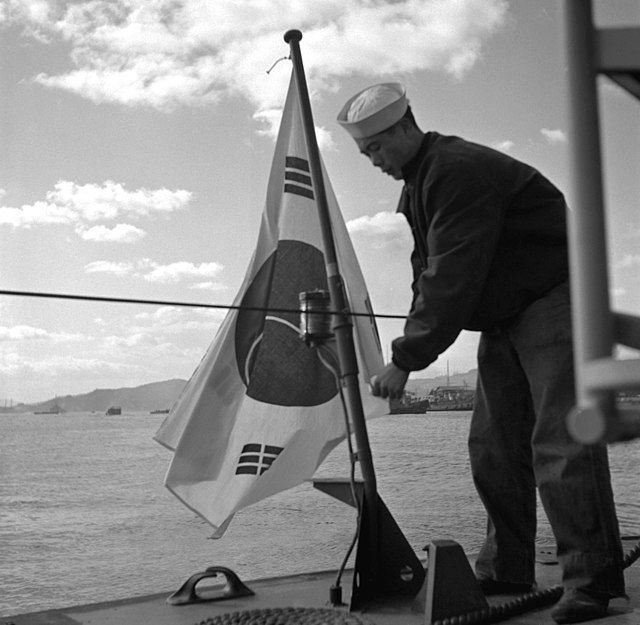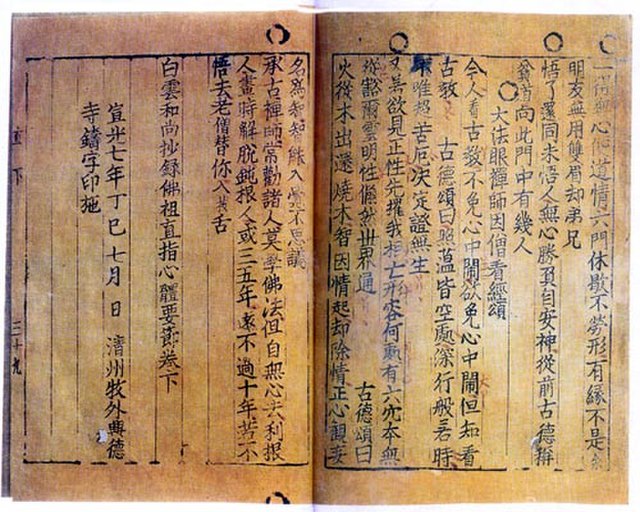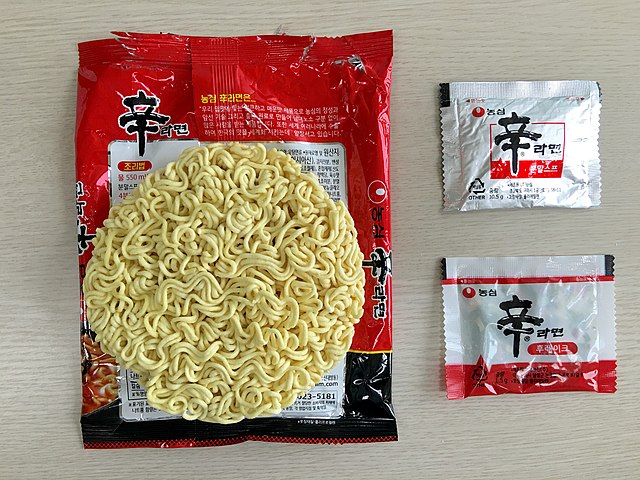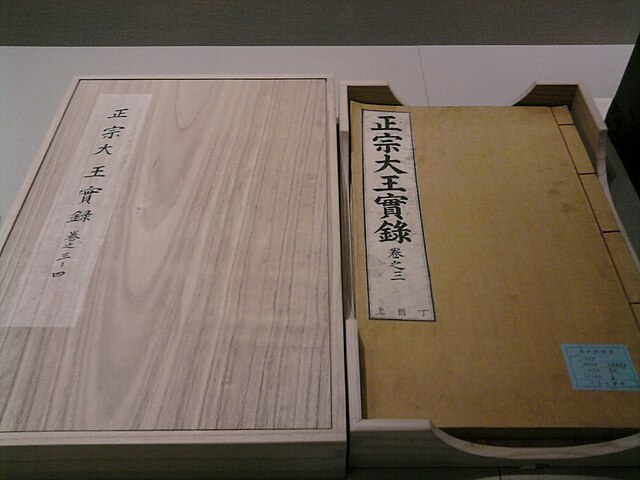The Republic of Korea Navy, also known as the ROK Navy or South Korean Navy, is the naval warfare service branch of the South Korean armed forces, responsible for naval and amphibious operations. The ROK Navy includes the Republic of Korea Marine Corps, which functions as a branch of the Navy. The ROK Navy has about 70,000 regular personnel including 29,000 Republic of Korea Marines. There are about 140 commissioned ships in the ROK Navy. The naval aviation force consists of about 70 fixed-wing and rotary-wing aircraft. The ROK Marine Corps has about 300 tracked vehicles including assault amphibious vehicles.
Early 15th century Korean turtle ship in an illustration dating to 1795
ROKS Baekdusan (PC 701), the first warship of the ROK Navy, undergoing refitting at Hawaii in March 1950
A ROKN sailor places a S. Korean naval ensign on a torpedo boat, after its transfer by the U.S. in the midst of the Korean War.
Ex-USN Cannon-class destroyer escorts transferred to the ROK Navy at Boston in 1956
Hanja, alternatively known as Hancha, are Chinese characters used in the writing of Korean. Hanja was used as early as the Gojoseon period under the first Korean kingdom.
The calligraphy of Korean scholar, poet and painter Gim Jeonghui (김정희; 金正喜) of the early nineteenth century. Like most educated Koreans from the Three Kingdom period until the fall of the Joseon dynasty in 1910, Gim Jeong-hui composed most of his works in hanmun or literary Chinese.
The Korean Baegun Hwasang Chorok Buljo Jikji Simche Yojeol (백운화상초록불조직지심체요절; 白雲和尙抄錄佛祖直指心體要節) or roughly 'Anthology of Great Buddhist Priests' Zen Teachings' is the oldest example of a book printed with moveable type and was printed in Korea in 1377, but is written in literary Chinese.
A packet of Shin Ramyun, the Chinese character 辛, meaning 'spicy', is prominently displayed
The Veritable Records of the Joseon Dynasty, an annual record of the Joseon dynasty throughout its entire history, was written in Classical Chinese.








